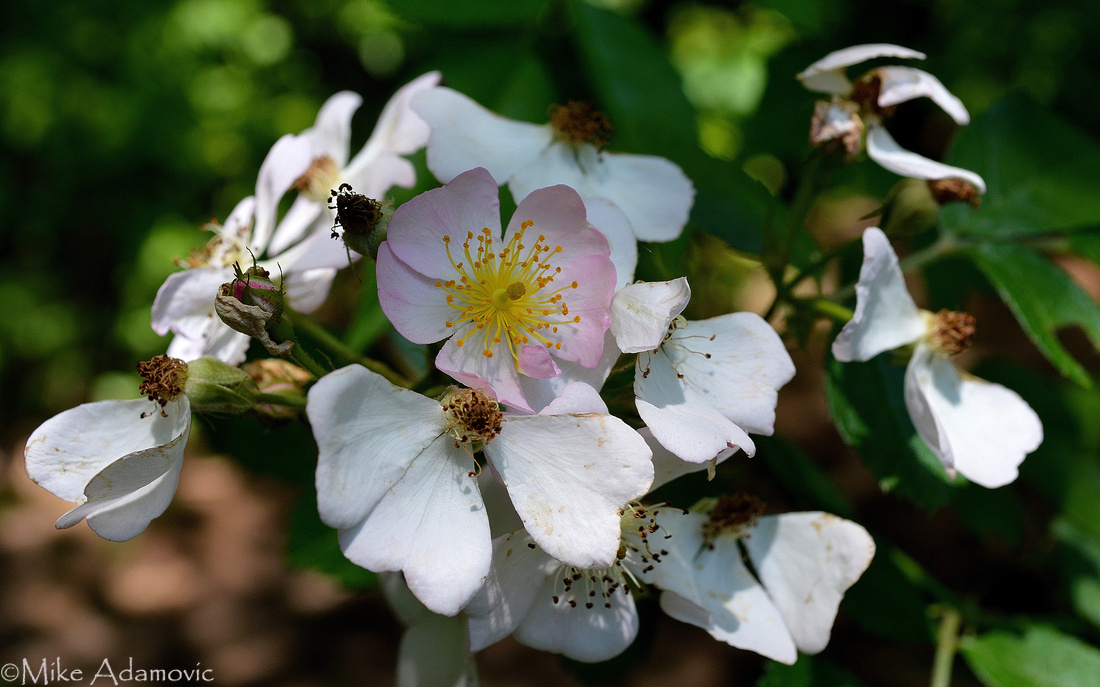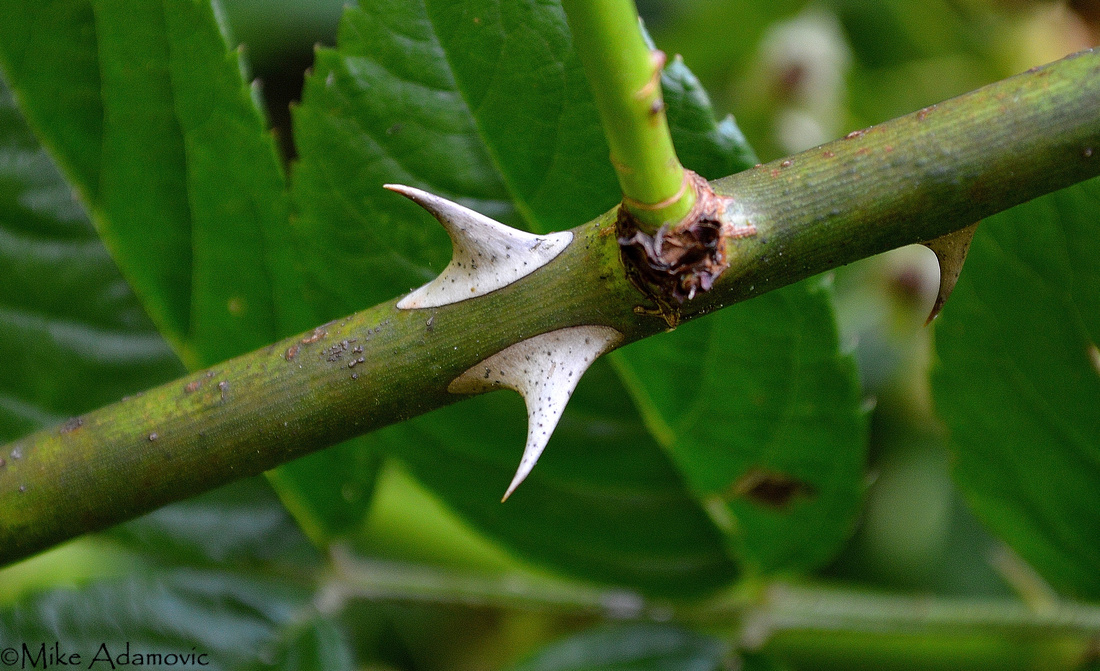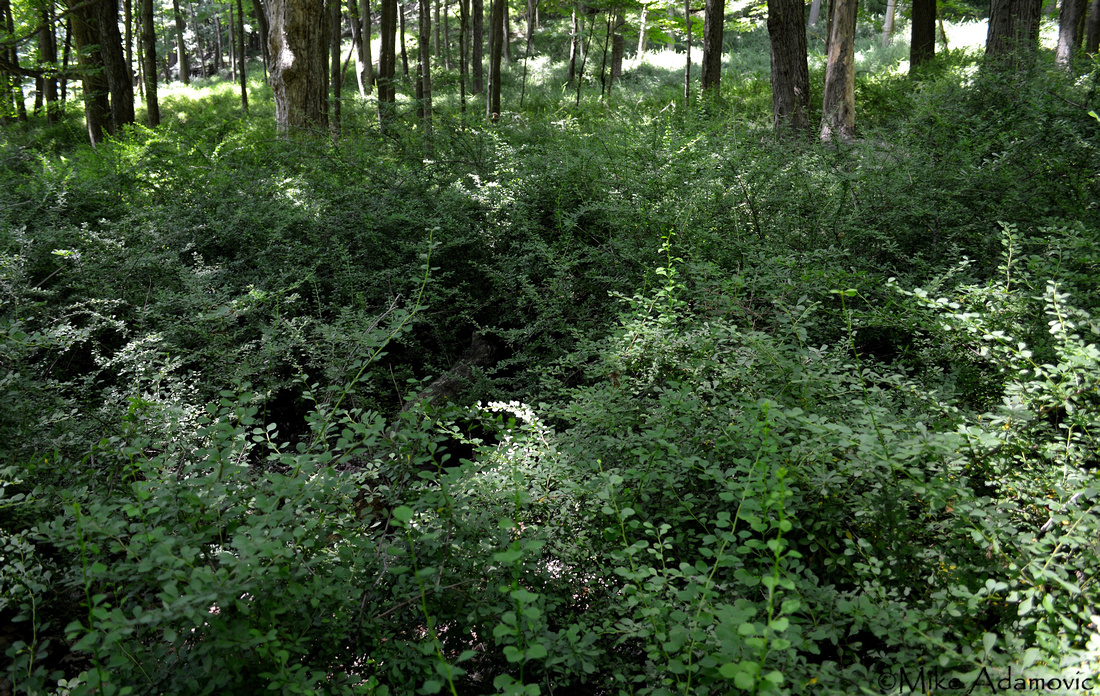Alien Invasion: The Proliferation of Invasive Species
As a naturalist, one with an especially keen interest in botany, I devote much of my time, both occupationally and recreationally studying, photographing, and writing about plant life. I find our green and oxygen providing friends fascinating—not only with their oftentimes mesmerizing physical beauty, but also with their unique adaptations that make glimpsing into the marvels of evolution possible. It is therefore with regret that I find it necessary to allot time here to address the depressing topic of invasive species proliferation, rather than perhaps writing about a rare orchid, or detailing the lives of bog plants that specialize in carnivory.
The term "invasive species" is defined as a non-native organism that has a tendency to rapidly and prolifically spread throughout an environment, causing ecological upheaval and degradation. Essentially, invasives cause damage to everything they touch, from evicting important native species locally (ultimately causing their widespread decline) to more immediate pecuniary matters, such as dropping property values by creating tangled, unsightly messes. It's a major problem that will not improve anytime soon. As someone who's immersed himself in researching and implementing new invasive control methods, I know firsthand that even the most advanced techniques are mediocre at best. Invasives are hardy, and above all, prolific. When human armies of volunteers hand pulling vines or uprooting shrubs isn't enough, we switch to armies of insects to defoliate them, but these, alas, can only eat so much. Take the Asian mile-a-minute vine (Persicaria perfoliata), for instance. A lightning fast grower in the plant world, capable of reaching lengths of 30 feet a year, this is a species that can't be adequately controlled by the typical manual hand-pull. Instead, we have switched to releasing biocontrol agents, namely, in this case, a tiny weevil that hails from the same exotic location as mile-a-minute and consumes nothing but it. The checks and balances that once kept invasives in line in their homeland cannot often be introduced to the U.S. to combat these leafy invaders for obvious reasons—few of these invasive predators confine themselves solely to one species, and could possibly become invasive themselves if imported. Only through intensive and vastly expensive research can we derive these mildly effective strategies to rid ourselves of invasives. It seems then, that prevention is the best cure.




Mile-a-Minute Weevils (Rhinoncomimus latipes)
New York has recently enacted regulations to curb the further introduction of invasives by outlawing the sale of several particularly noxious species. A majority of these plants have been used in decorative landscaping in the past, escaping into the wild most frequently via seed scattering wildlife. What makes them so damaging is their propensity to exploit and thrive in disturbed or degraded environments better than most natives. Their quick colonization gives them an edge by providing a defensive position; beleaguered natives, in contrast, must try to reconquer their lost land against a more numerous and robust enemy. Increased awareness to the problem and stricter regulations regarding the distribution of these damaging organisms by retailers is a step in the right direction.
Unfortunately, the landscape is already greatly sickened, suffering from an unending illness that daily drags it further into dismay. Facing an onslaught of environmental disasters such as habitat destruction, global warming, acid rain, among numerous others, the addition of invasive species into the mix on a level higher than what it currently stands at could be what pushes things over the edge. While we can reduce our carbon emissions to ameliorate climate change and acidification, and restore habitat by revegetating it, it is impossible to wholly remove non-native species from the environment. It's a quandary akin to the opening of Pandora's box.
And like the released sufferings of mankind, we are constantly bombarded by an invasive presence. They tauntingly thrive along forest edges, open fields, and in our own yards where unplanted. Startlingly, most roadsides boast a higher composition of alien species than they do natives. While many of these fall into the Old World weed category (dandelion, chicory, mullein, etc.) and aren't especially detrimental, they are nevertheless alien, and have supplanted an important native plant.
But why should we particularly care that invasives have taken hold, especially when many are imbued with an exquisite beauty on a level surpassing their native counterparts? While it's true that in terms of showiness invasives can, and do, compliment the landscape by adding bursts of color where otherwise dull monochromatic hues dominate, they typically upset the intricacies of an ecosystem. While I admire the pleasing tints given to a wetland by dense arrays of the invasive purple loosestrife, whose long spires cloaked in splendid deep evening hues turn the earth into a twilight wonderland, my overall opinion of the scene is one of dismay. Beyond the hazy smokescreen of color lies a litany of problems. Increased biomass input results in waterways becoming clogged, which given enough time will fill in with sediment and the remains of decaying plants so that the system ages prematurely, transitioning into a drier habitat centuries or millennia ahead of its destined time. Blankets of loosestrife which can top out at 10 feet tower above other plants shading them out, which when rare, helps to extinguish a species from existence. To me, there's nothing more beautiful and impressive than a healthy and well-functioning ecosystem that operates flawlessly to provide for the thousands of creatures, both large and small, that inhabit it. An invasive plant throws a ratchet into the gears.
Some will argue that since many non-natives are now firmly established they should be left alone, given some of the benefits they do in fact offer. It's true, invasives, in certain cases, can positively affect an ecosystem by providing shelter or food to organisms in need. The negative consequences, however, as already noted, generally outweigh the positive attributes. I often lump critics of invasive control with those who feed wildlife, such as geese or deer. They often mean well, but their misguided beliefs ultimately cause more harm than good in the long run.
Multiflora rose (Rosa multiflora) is one such invasive that offers both nourishing food and heavy cover. In late May or June the shrub produces copious quantities of white flowers that provide a tasty meal to insect pollinators; while during the fall and winter its saccharine rose-hips are feasted on by birds. Moreover, it expands quickly and in short time resembles something similar to an unruly tumbleweed. It's capable of towering well above head height and growing to lengths of over 15 feet. Its tangled branch-like canes are excellent for concealing smaller sized birds that will frequently choose the thick shrubs as nesting sites. Small mammals, such as rabbits, often use the groundcover to avoid predators, quickly fleeing to the safety of the thorn filled mess upon the slightest sign of danger.


Multiflora Rose
When these roses spring up in old fields or pastures, which they are apt to do, they make it difficult for ecological succession to occur. The denseness of the shrubs tightly packed together exclude trees from gaining a foothold. Normally as the trees mature and gain in height their lofty branches shade out the shrub layer and make way for a proper forest. Extraordinary shrubs, like multiflora, inhibit this natural succession by keeping the old field environs in a quasi-pasture state, where it remains in a sickly adolescence indefinitely. Apart from the ecological ramifications of this, these briar patches are a great nuisance to farmers and landowners who have their properties overrun by endless snarls of shrubs that scratch and bite the passerby with their fishhook-like thorns.
Hikers and anyone else who happens to spend a good deal of time outside has surely endured the tedium of navigating through a patch of multiflora, always on the alert to avoid getting tangled in the wiry canes and ultimately cut up. When patches encroach on hiking trails or ecologically sensitive habitat it becomes necessary to remove them, not by means of herbicide or biocontrol insects, but by good old fashioned manual labor. I've endeavored many a time to scrub land clean of these noxious pests, which, by the way, is a Herculean task on par with descending into bowels of perdition to extinguish the ubiquitous hellfire by means of a squirt-gun. It's slow, tedious, and above all, painful work. Even the thickest clothing and leather gloves will soon gain such a riddling of holes as to become useless, as the 1/4 inch thorns relentlessly probe the garments, similarly to a mosquito's quest to draw blood. And it's not enough to simply clip the canes, the roots must be dug out as well, or they will regrow back with a vengeance. It is for all these reasons that multiflora is by far my least favorite invasive, though by no means the most damaging of the bunch.


Multiflora Thorns
I can't stress enough the importance of removing multiflora, or any other invasive for that matter, when they're still young and controllable. Left to grow unchecked and what was once a mild problem will balloon into what can best be described as a malignant tumor spreading its contagion throughout the rest of a once otherwise healthy system. For example, if a modest specimen of multiflora is allowed to go to seed it can produce a million seeds a year, each of which possesses the capability of surviving in the environment for up to 20 years! This type of fecundity is the norm for most invasives.
What is most worrisome in this crusade is the public's abysmal plant identification skills. That so few people can correctly identify a plant, let alone decipher whether it's native or alien is alarming. If we are to succeed in stymieing their further establishment and proliferation it is imperative we can distinguish friend from foe, and uproot the latter whenever encountered. The worst offenders, at the very least, should be put into the pot of common knowledge via amendments to course curricula, public service announcements, and broadcast in a variety of other similar means. Moreover, to avoid introducing additional seeds and new species into the mix we must alter our ways when it comes to the types of species utilized in garden projects and landscaping. The traditional array of plants used in years past now belong to a bygone era. Instead of sticking by these garish and cliché cultivars, more plastic in nature than plant-like, natives which blend into and become a part of the landscape, vigorously provide for local fauna, and demonstrate ecological awareness and sensitivity should be put to use instead. Nurseries specializing in native flora are rapidly proliferating and provide every element needed to make a yard or property wholesome and alluring.




Japanese Barberry
I've always been especially captivated by the early descriptions of the New World by explorers hailing from the crowded environs of Europe. Compared to the exhausted and overly tilled countryside of their homeland, America was a verdant paradise, an Eden. What they found and recorded was almost too fantastic to be believed by their countrymen overseas. And unfortunately for contemporary society, these renditions are now equally as foreign to us. Forests stretching uninterruptedly into the distant horizon gave credence to the belief that these tracks of wild land contained "such an abundance of wood that it will never be wanting." How impressive and dominating the landscape must have appeared for this thought to arise! The ravenous consumption of wood back in the Old World was something that couldn't be ignored, and yet, despite this, American forests appeared to be endless and inexhaustible, comprised of titanic and ancient trees of every shape and dimension that overwhelmed the senses. Such a vast and seemingly boundless wilderness, one teeming with bear and wildcats, swarming with sky-blackening flocks of passenger pigeons that feast on a rich and eclectic diet of vivid berries and meaty nuts, and an understory lined with sweet smelling grasses and flowers that perfume and permeate the air, is now but a distant memory that continues to grow fainter every day as habitat destruction erases the last degraded pieces that remain and link us to the past.
To prevent our new world from becoming the same as the old we can partially restore (albeit modestly) what has been lost. Everyone has the capability to make a difference, and like most things, these changes first begin at home. Hedges of multiflora, Japanese barberry, and forsythia can be substituted with rows of native bayberry or highbush blueberry. In terms of climbing vines, why use English ivy, silverlace vine, and porcelainberry, when the equally beautiful wild clematises, with their delicate white or purple blossoms, and the groundnut with its sweet-scented chocolate-hued flowers, can bestow a similarly lush and sophisticated looking drapery? And lastly, those garden beds—instead of populating them with ostentatious and yawn producing aggregations of tulips and daffodils, plant flowers with more depth and intrigue, such as the underappreciated violets, ivory petaled bloodroot, and vivid red columbine. See where I'm going with this? Any non-native ornamental can easily be replaced with a more unique and essential native. Renew the landscape. While much of what has been lost is irrecoverable, let's take back as much as we can. Why should we be content to leave the best wonders consigned to the pages of some musty book?

